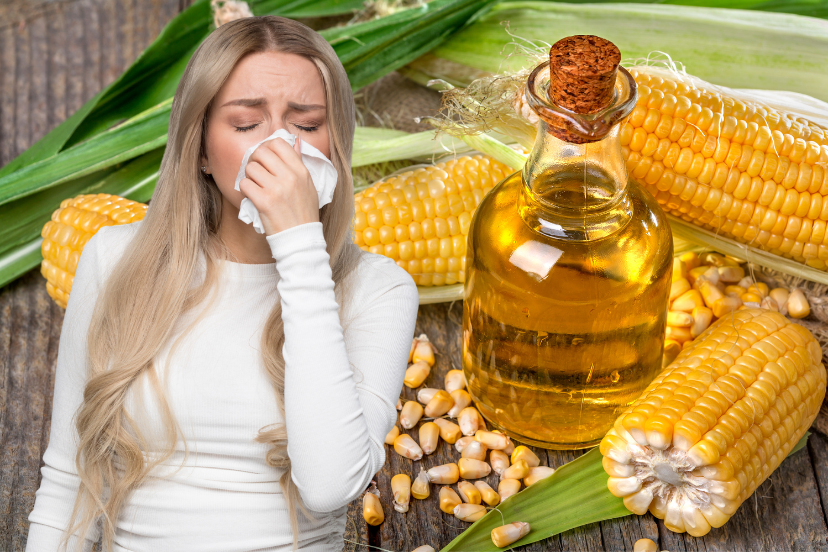Corn Allergy: Unmasking the Hidden Culprit
In a world of diverse dietary needs and health concerns, allergies often lurk beneath the surface, affecting lives in profound ways. One such prevalent but often overlooked condition is Corn Allergy. Unveiling the intricacies of this allergy is crucial for those affected and their communities. Let’s delve into the depths of what a Corn Allergy truly entails.
Corn Allergy: Unveiling the Enigma
To comprehend the impact of the allergy, one must grasp its fundamentals. This allergy involves an adverse immune response to proteins found in corn and corn-derived products. It can manifest in various symptoms ranging from mild to severe, making it imperative to identify and manage effectively.
Corn, a staple ingredient in numerous food products and everyday items, proves to be a challenging adversary for those with this allergy. The body’s immune system, misidentifying proteins in corn as harmful, triggers a response, leading to allergic reactions.
Symptoms of Corn Allergy
The allergy can exhibit a diverse array of symptoms, making it difficult to diagnose at times. These symptoms can include:
- Skin rashes or hives
- Digestive issues like nausea, vomiting, or diarrhea
- Respiratory problems like wheezing or shortness of breath
- Nasal congestion or runny nose
- Swelling of the lips, tongue, throat, or other parts of the body
- Anaphylaxis (a severe, potentially life-threatening reaction)
These symptoms can occur shortly after consuming corn or corn-containing products, making them easily identifiable.
Common Sources of Corn
Corn is omnipresent in the modern diet, and avoiding it entirely can be a challenge. Here are common sources where corn hides:
- Food Products: Corn appears in various forms – corn syrup, cornstarch, corn flour, and more.
- Beverages: Some alcoholic drinks and soft drinks use corn-derived sweeteners.
- Medications: Corn-derived ingredients may exist in certain medications and supplements.
- Personal Care Products: Items like lotions and shampoos might contain corn-based elements.
Being vigilant about ingredient labels is vital for those with this kind of allergy.
Diagnosis and Testing
Identifying a Corn Allergy involves a combination of medical history, allergy testing, and food diary analysis. Allergy tests like skin prick tests or blood tests can provide valuable insights.
Living with Corn Allergy: Management and Diet
Managing a the allergy necessitates a comprehensive approach:
- Avoidance: Steer clear of corn and its derivatives, meticulously reading labels.
- Education: Educate yourself and others about hidden sources of corn.
- Alternative Ingredients: Explore corn-free substitutes for a balanced diet.
Frequently Asked Questions (FAQs)
1. What Exactly Is a Corn Allergy?
A Corn Allergy is an immune response to proteins found in corn and corn-derived products, causing a range of symptoms from mild to severe.
2. Are Corn Allergies Common?
Yes, corn allergies are not as rare as once believed, affecting a considerable portion of the population.
3. Can Corn Allergies Develop Later in Life?
Absolutely, allergies, including corn allergy, can manifest at any age, even in adulthood.
4. Are All Parts of Corn Equally Allergenic?
No, allergic reactions can vary based on the specific proteins in different parts of the corn.
5. Can Corn Allergy Lead to Anaphylaxis?
Yes, severe allergic reactions to corn, known as anaphylaxis, can be life-threatening and require immediate medical attention.
6. Is Genetic Predisposition a Factor in Corn Allergies?
Genetics can play a role in predisposing individuals to corn allergies, but environmental factors also influence their development.
In Conclusion
Navigating life with a Corn Allergy demands vigilance, education, and determination. Understanding the symptoms, sources, and management strategies can empower individuals to live healthy, fulfilling lives while managing this allergy. With awareness and proactive measures, individuals can find their path to a corn-free existence, embracing alternative options without compromise.




